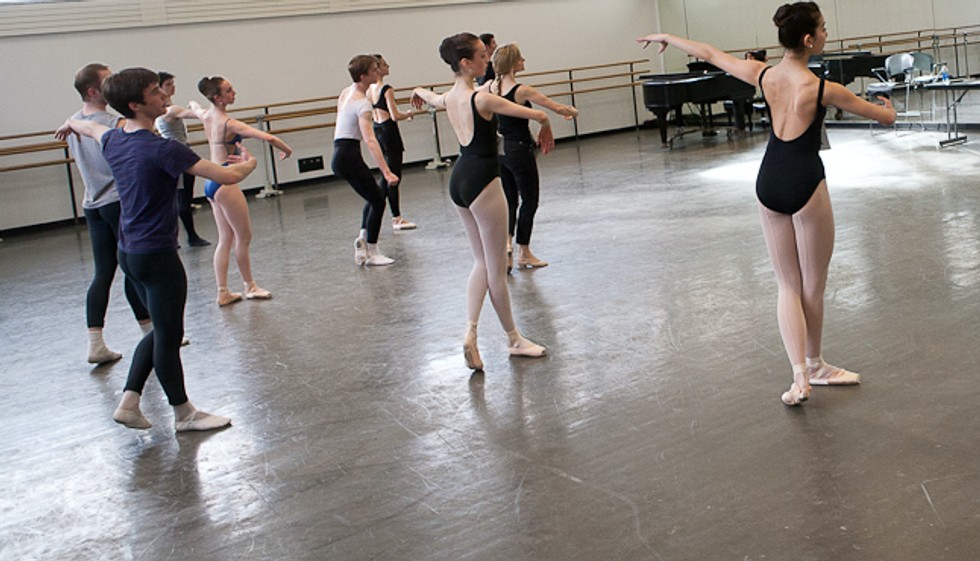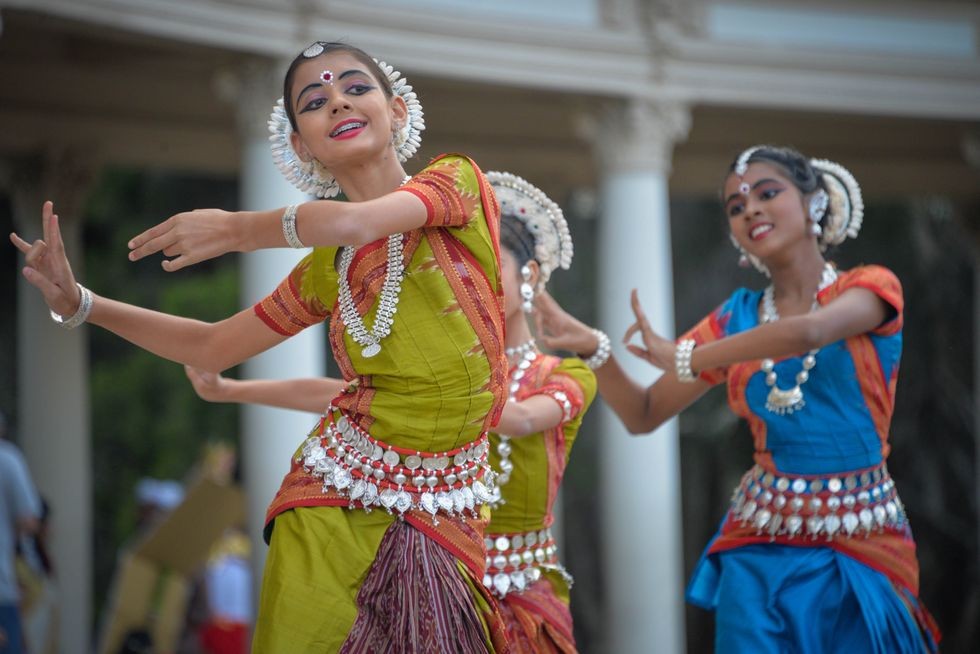Learning dance moves quickly is achievable with the right strategies and understanding of how your body and mind process movement. At LEARNS.EDU.VN, we provide the tools and knowledge to help you accelerate your dance learning journey, making the process more efficient and enjoyable through the implementation of kinesthetic learning techniques.
Ready to enhance your dance skills? Explore cognitive strategies for dancers, enhance kinesthetic awareness, and accelerate your learning curve with LEARNS.EDU.VN, your partner in mastering the art of dance.
1. Understanding the Science Behind Learning Dance Moves Quickly
1.1 The Neurological Processes Involved in Dance
Dancing is more than just physical movement; it’s a complex neurological process. According to a 2008 research paper by Steven Brown and Lawrence M. Parsons titled The Neuroscience of Dance, the brain translates visual information into motor commands, which are then sent to the spinal cord and muscles. Sensory organs in the muscles provide feedback to the brain, creating a continuous loop of information processing. Understanding this process can help you optimize your learning techniques.
1.2 Praxis and Motor Planning
The process of learning movement involves praxis, which includes ideation (conceptualizing a new activity), motor planning (organizing and sequencing motor actions), and execution (performing the actions). Challenges in any of these stages can hinder your ability to pick up choreography quickly. Recognizing where your breakdown occurs—whether it’s in motor planning or execution—is crucial for targeted improvement.
1.3 Auditory and Motor Processing
Some individuals may have difficulties with auditory processing, which affects their ability to remember sequences and discriminate sounds in background noise. This can impact how quickly they learn dance moves. Similarly, motor planning deficits can slow down the acquisition of movement.
2. Identifying Your Learning Style
2.1 Visual Learners
Visual learners benefit from seeing demonstrations and observing others. If you’re a visual learner:
- Watch videos: Utilize YouTube and other platforms to watch dance tutorials and performances.
- Attend live classes: Observe instructors and other dancers closely.
- Use mirrors: Practice in front of a mirror to see and correct your movements.
2.2 Auditory Learners
Auditory learners learn best by hearing instructions and music. If you’re an auditory learner:
- Record instructions: Use voice memos to record choreography and instructions.
- Listen to music repeatedly: Familiarize yourself with the rhythm and musicality of the dance.
- Verbalize steps: Say the steps aloud as you practice.
2.3 Kinesthetic Learners
Kinesthetic learners learn through physical experience and practice. If you’re a kinesthetic learner:
- Practice frequently: Repetition is key to muscle memory.
- Feel the movement: Focus on the sensations and feelings associated with each step.
- Engage actively: Don’t just watch or listen; actively participate and move.
3. Essential Techniques to Learn Dance Moves Faster
3.1 Breaking Down Choreography
One of the most effective ways to learn dance moves quickly is to break down the choreography into smaller, manageable parts. This approach simplifies the learning process and allows you to master each segment before combining them.
Steps:
- Identify the sections: Divide the choreography into smaller sequences.
- Master each sequence: Focus on perfecting one sequence at a time.
- Combine sequences: Gradually link the sequences together to form the whole routine.
3.2 Using Mnemonics and Visualization
Mnemonics and visualization techniques can significantly enhance your memory and retention of dance moves.
Examples of Mnemonics:
- Acronyms: Create acronyms for sequences of steps.
- Rhymes: Develop rhymes to remember the order of movements.
- Associations: Associate steps with familiar images or stories.
Visualization Techniques:
- Mental rehearsal: Visualize yourself performing the choreography perfectly.
- Imagery: Use vivid imagery to connect with the movements.
- Focus: Concentrate on the details of each step in your mind.
3.3 Repetition and Muscle Memory
Repetition is crucial for developing muscle memory, which allows you to perform dance moves without consciously thinking about them.
Strategies for Repetition:
- Consistent practice: Practice regularly, even for short periods.
- Deliberate practice: Focus on specific areas that need improvement.
- Varying practice: Practice in different environments and at different speeds.
3.4 Active Listening and Observation
Active listening and observation are essential skills for learning dance moves quickly. Pay close attention to the instructor’s cues, musicality, and the movements of other dancers.
How to Improve Active Listening:
- Focus: Concentrate on the instructor’s instructions.
- Ask questions: Clarify any doubts or uncertainties.
- Take notes: Jot down key points and reminders.
Observation Tips:
- Watch carefully: Observe the instructor and other dancers.
- Mimic movements: Try to replicate the movements you see.
- Analyze technique: Pay attention to posture, alignment, and form.
3.5 Utilizing Technology and Resources
In today’s digital age, numerous tools and resources can aid in learning dance moves quickly.
Digital Tools:
- Dance apps: Use apps that provide tutorials, choreography, and practice tools.
- YouTube: Watch dance tutorials and performances on YouTube.
- Video recording: Record yourself practicing to identify areas for improvement.
Resources:
- Dance studios: Attend classes and workshops at local dance studios.
- Online courses: Enroll in online dance courses for structured learning.
- Dance communities: Join online and offline dance communities for support and collaboration.
4. Optimizing Your Practice Environment
4.1 Creating a Dedicated Practice Space
Having a dedicated practice space can significantly improve your focus and consistency.
Tips for Setting Up Your Practice Space:
- Choose a quiet area: Select a space free from distractions.
- Ensure adequate space: Make sure you have enough room to move freely.
- Install mirrors: Use mirrors to monitor your form and technique.
- Set up audio: Have a reliable audio system for music and instructions.
4.2 Setting Realistic Goals and Time Management
Setting realistic goals and managing your time effectively are crucial for staying motivated and making progress.
How to Set Realistic Goals:
- Start small: Begin with achievable goals and gradually increase the difficulty.
- Be specific: Define your goals clearly and precisely.
- Set deadlines: Establish timelines for achieving your goals.
Time Management Strategies:
- Create a schedule: Plan your practice sessions in advance.
- Prioritize tasks: Focus on the most important aspects of your learning.
- Break down sessions: Divide your practice into shorter, focused intervals.
4.3 Maintaining Physical and Mental Well-being
Physical and mental well-being are essential for optimal learning and performance.
Physical Health Tips:
- Warm-up: Always warm up before practicing to prevent injuries.
- Cool-down: Cool down after practicing to reduce muscle soreness.
- Stay hydrated: Drink plenty of water to maintain energy levels.
- Get enough sleep: Ensure you get adequate rest for recovery.
Mental Health Tips:
- Stay positive: Maintain a positive attitude and focus on your progress.
- Manage stress: Practice relaxation techniques to manage stress.
- Seek support: Connect with friends, family, or a therapist for support.
5. Addressing Common Challenges in Learning Dance Moves
5.1 Overcoming Self-Doubt and Anxiety
Self-doubt and anxiety can significantly hinder your ability to learn and perform dance moves.
Strategies to Overcome Self-Doubt:
- Challenge negative thoughts: Replace negative thoughts with positive affirmations.
- Focus on progress: Celebrate your achievements, no matter how small.
- Seek feedback: Ask for constructive criticism from trusted sources.
Techniques to Manage Anxiety:
- Deep breathing: Practice deep breathing exercises to calm your nerves.
- Mindfulness: Focus on the present moment to reduce anxiety.
- Visualization: Visualize yourself performing confidently and successfully.
5.2 Dealing with Plateaus and Setbacks
Plateaus and setbacks are a natural part of the learning process. It’s important to develop strategies to overcome these challenges.
Strategies to Overcome Plateaus:
- Change your routine: Try different practice methods to stimulate new growth.
- Seek new perspectives: Learn from different instructors or dancers.
- Focus on fundamentals: Revisit basic techniques to strengthen your foundation.
How to Handle Setbacks:
- Stay positive: Maintain a positive attitude and view setbacks as learning opportunities.
- Analyze the situation: Identify the causes of the setback and develop a plan to address them.
- Seek support: Talk to friends, family, or a mentor for encouragement.
5.3 Improving Coordination and Balance
Coordination and balance are fundamental skills for dancing.
Exercises to Improve Coordination:
| Exercise | Description | Benefits |
|---|---|---|
| Cross-body reaches | Touching opposite hand to opposite knee while maintaining balance. | Enhances coordination and body awareness. |
| Arm and leg combinations | Performing different arm and leg movements simultaneously. | Improves coordination and multitasking abilities. |
| Mirror exercises | Mimicking the movements of a partner or instructor. | Enhances coordination and visual-motor integration. |


Exercises to Improve Balance:
| Exercise | Description | Benefits |
|---|---|---|
| Single-leg stands | Standing on one leg for increasing periods of time. | Strengthens core and leg muscles, improving balance. |
| Balance board | Using a balance board to improve stability. | Enhances balance and proprioception. |
| Yoga and Pilates | Practicing yoga and Pilates poses that challenge balance. | Improves balance, flexibility, and core strength. |
6. Advanced Strategies for Accelerated Learning
6.1 Studying Different Dance Styles
Exploring various dance styles can broaden your understanding of movement and enhance your adaptability.
Benefits of Cross-Training in Different Styles:
- Improved versatility: Develop a wider range of skills and techniques.
- Enhanced creativity: Gain new ideas and inspirations from different styles.
- Increased adaptability: Become more proficient at learning new choreography quickly.
Popular Dance Styles to Explore:
- Ballet: Focuses on technique, alignment, and grace.
- Jazz: Emphasizes rhythm, improvisation, and energy.
- Hip-Hop: Centers on groove, expression, and street style.
- Contemporary: Combines elements of ballet, jazz, and modern dance.
6.2 Collaborating with Other Dancers
Collaborating with other dancers can provide valuable learning opportunities and support.
Ways to Collaborate:
- Practice together: Rehearse choreography with other dancers.
- Share feedback: Exchange constructive criticism and tips.
- Attend workshops: Participate in workshops and classes together.
- Create projects: Collaborate on choreographic projects and performances.
6.3 Seeking Professional Guidance
Working with a professional dance instructor or coach can provide personalized guidance and support.
Benefits of Professional Guidance:
- Personalized feedback: Receive tailored feedback on your technique and performance.
- Structured learning: Follow a structured curriculum designed to meet your specific needs.
- Motivation and support: Stay motivated and receive encouragement from an experienced professional.
6.4 Analyzing Professional Performances
Studying professional dance performances can provide valuable insights into technique, artistry, and performance quality.
How to Analyze Performances:
- Watch attentively: Pay close attention to the dancers’ technique, expression, and musicality.
- Take notes: Jot down observations and insights.
- Re-watch segments: Focus on specific sections to analyze details.
- Discuss with others: Share your observations and discuss them with other dancers or instructors.
6.5 Integrating Music Theory and Rhythm Training
Understanding music theory and rhythm can significantly enhance your ability to learn and perform dance moves.
Key Concepts in Music Theory:
- Rhythm: The arrangement of sounds and silences in time.
- Tempo: The speed of the music.
- Meter: The rhythmic pattern of the music.
- Phrasing: The way the music is divided into sections or phrases.
Rhythm Training Exercises:
- Clapping: Clap along to different rhythms and tempos.
- Counting: Count the beats in a musical phrase.
- Improvisation: Improvise movements to different musical styles.
7. Tools and Resources on LEARNS.EDU.VN
7.1 Dance Tutorials and Courses
LEARNS.EDU.VN offers a variety of dance tutorials and courses designed to help you learn dance moves quickly and effectively.
Available Resources:
- Beginner courses: Introductory courses for various dance styles.
- Advanced tutorials: In-depth tutorials on specific techniques and choreography.
- Personalized learning plans: Customized plans to meet your individual needs and goals.
7.2 Interactive Practice Tools
Our website provides interactive practice tools to enhance your learning experience.
Interactive Tools:
- Video analysis: Upload videos of your practice and receive feedback from instructors.
- Rhythm games: Play interactive games to improve your rhythm and timing.
- Virtual studio: Practice in a virtual studio environment with customizable settings.
7.3 Community Forums and Expert Support
LEARNS.EDU.VN offers community forums and expert support to help you connect with other dancers and receive guidance from professionals.
Community Features:
- Discussion forums: Participate in discussions and share your experiences with other dancers.
- Expert Q&A: Ask questions and receive answers from experienced instructors and dancers.
- Collaborative projects: Collaborate on dance projects with other members of the community.
8. Real-Life Examples and Success Stories
8.1 Case Studies of Dancers Who Learned Quickly
Case Study 1: Maria, Ballet Dancer
Maria struggled with learning choreography quickly in ballet class. She started using visualization techniques, practicing in front of a mirror, and breaking down the choreography into smaller parts. Within a few months, she noticed a significant improvement in her ability to pick up new sequences.
Case Study 2: David, Hip-Hop Dancer
David found it challenging to keep up with the fast-paced choreography in hip-hop class. He began recording the instructor’s instructions, practicing with a metronome, and focusing on mastering basic rhythms. Over time, he became more confident and was able to learn new routines more quickly.
8.2 Tips from Professional Dancers
Professional Dancer Tip 1: Focus on the Fundamentals
“Mastering the fundamentals is crucial for learning dance moves quickly. Spend time perfecting basic techniques, and the more complex movements will come more easily.” – Anna, Professional Ballet Dancer
Professional Dancer Tip 2: Practice Consistently
“Consistency is key. Even short, focused practice sessions can make a big difference. Make dance a regular part of your routine, and you’ll see steady progress.” – Ben, Professional Hip-Hop Dancer
Professional Dancer Tip 3: Seek Feedback Regularly
“Don’t be afraid to ask for feedback. Constructive criticism can help you identify areas for improvement and accelerate your learning.” – Clara, Professional Contemporary Dancer
9. The Future of Dance Education
9.1 Emerging Technologies in Dance Training
Emerging technologies are transforming dance education, making it more accessible, personalized, and effective.
Examples of Emerging Technologies:
- Virtual reality (VR): VR can create immersive learning environments that allow dancers to practice in realistic settings.
- Augmented reality (AR): AR can overlay digital information onto the real world, providing real-time feedback on technique and performance.
- Artificial intelligence (AI): AI can analyze movement data to provide personalized training recommendations.
9.2 The Role of Online Platforms
Online platforms like LEARNS.EDU.VN are playing an increasingly important role in dance education.
Benefits of Online Platforms:
- Accessibility: Online platforms make dance education accessible to anyone, anywhere in the world.
- Flexibility: Online courses and tutorials can be accessed at any time, allowing dancers to learn at their own pace.
- Personalization: Online platforms can provide personalized learning experiences tailored to individual needs and goals.
9.3 Predictions for Dance Education in the Next Decade
In the next decade, dance education is likely to become more integrated with technology, more personalized, and more focused on holistic development.
Predictions:
- Increased use of AI and VR: AI and VR will become more prevalent in dance training, providing dancers with immersive and personalized learning experiences.
- Emphasis on creativity and collaboration: Dance education will place greater emphasis on creativity and collaboration, encouraging dancers to develop their unique artistic voices.
- Focus on mental and emotional well-being: Dance education will incorporate strategies for promoting mental and emotional well-being, helping dancers manage stress and maintain a positive attitude.
10. FAQ: Learn Dance Moves Quickly
Q1: What is the best way to learn dance moves quickly?
The best way to learn dance moves quickly involves breaking down choreography into smaller parts, utilizing mnemonics and visualization, practicing repetition for muscle memory, and actively listening and observing.
Q2: How can I improve my muscle memory for dance?
To improve muscle memory for dance, practice consistently, focus on deliberate practice, and vary your practice environment.
Q3: What are some common challenges in learning dance moves?
Common challenges include overcoming self-doubt and anxiety, dealing with plateaus and setbacks, and improving coordination and balance.
Q4: How can I improve my coordination and balance for dance?
Improve coordination through cross-body reaches, arm and leg combinations, and mirror exercises. Enhance balance with single-leg stands, balance board exercises, and yoga/Pilates.
Q5: What role does music theory play in learning dance?
Understanding music theory and rhythm helps you internalize musicality, improve timing, and anticipate changes in the music, making it easier to learn choreography.
Q6: Are online dance tutorials effective?
Yes, online dance tutorials can be effective, especially when combined with active practice, personalized feedback, and a structured learning plan.
Q7: How often should I practice dance to see improvement?
Practice frequency depends on your goals and schedule, but aiming for at least 3-4 sessions per week can lead to significant improvement.
Q8: What are some emerging technologies in dance training?
Emerging technologies include virtual reality (VR), augmented reality (AR), and artificial intelligence (AI), which enhance training experiences through immersive and personalized learning.
Q9: How can collaborating with other dancers help me learn faster?
Collaborating with other dancers allows you to share feedback, practice together, attend workshops, and create collaborative projects, enriching your learning experience.
Q10: Is it important to study different dance styles?
Yes, studying different dance styles improves versatility, enhances creativity, and increases adaptability, making you a more well-rounded and quick-learning dancer.
Ready to accelerate your dance journey? Visit LEARNS.EDU.VN today to explore our extensive range of dance tutorials, interactive tools, and expert resources. With our comprehensive approach, you can unlock your potential and master dance moves quickly and confidently.
Address: 123 Education Way, Learnville, CA 90210, United States
WhatsApp: +1 555-555-1212
Website: learns.edu.vn
